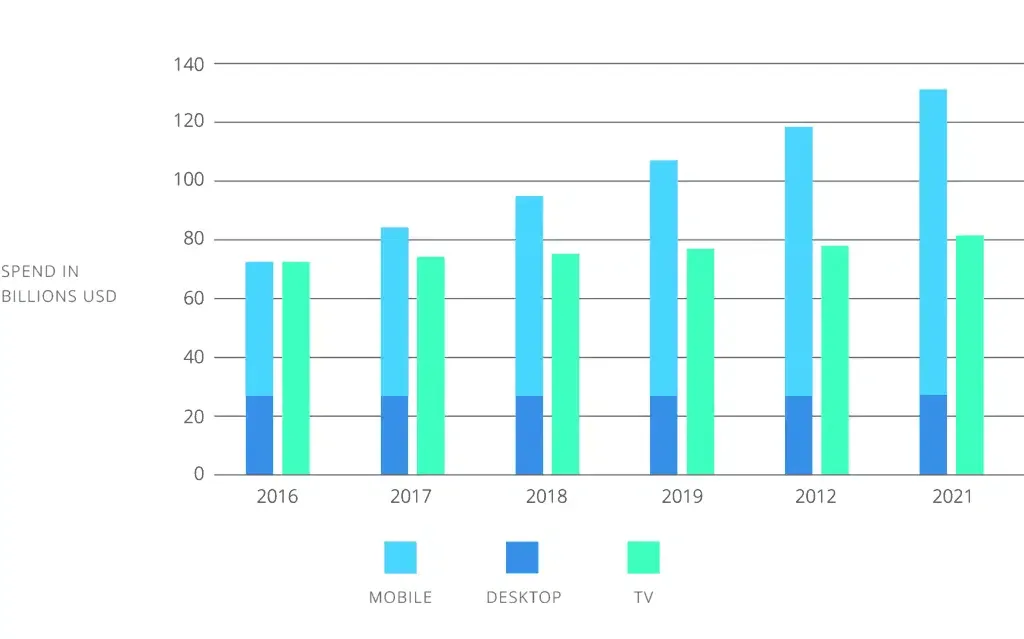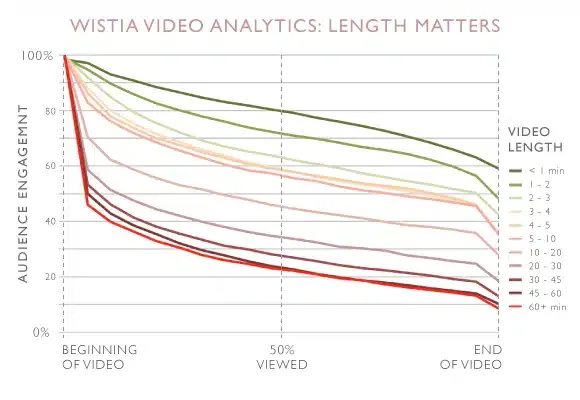
“The trick is to serve users something fun and engaging at the top of the funnel, and then re-target them with ads that drive conversions.” Car phone Warehouse’s Angela Bertram[su_spacer size=”10″]
Choose your video campaign objective
Identify your key objective for each video campaign. This will inform your video content and how you measure success. Common goals for video ads would include: • Brand awareness (tell people about your brand) • Brand consideration (tell people why you’re the best) • Demand generation (tell people why they need your products or services) Identify your objective before creating content, so that your video aligns with the type of success you want to drive. Here are key content types for each objective. For brand awareness and brand consideration: • Position yourself as a thought leader • Tell your brand story • Share stories of customer success For demand generation: • Show a quick demo of your product • Give a sneak peek of your webinar • Overview of your Facility or Mfg. plant • Preview your event Optimize your video length based on your objective. Keep videos under 30 seconds for brand awareness and brand consideration goals. Videos under 30 seconds reported a 200% lift in view completion rates (Source: LinkedIn internal study, 2018). As audiences become more inundated by video, businesses and marketers will have to become more skilled at creating truly valuable content. Therefore, I expect the overall quality of video content to improve in 2018. [su_spacer size=”5″]Start Making Vertical Videos for Social Media
What is Vertical Video? A vertical video is a video created either by a camera or computer that is intended for viewing in portrait mode, producing an image that is taller than it is wide, rather than the widescreen format normalized by cinema and television. Hold your phone horizontally the view-able screen area is a 16:9 aspect ratio. When you hold your phone upright and record video – it’s in a 9:16 aspect ratio. Taller than it is wide. Hence the name… vertical video. (source) The 9:16 aspect ratio of a vertical creative is different from 4:3 content. Vertical content requires creative directors to think about what the camera can focus on. Content in 4:3 is much wider so there can be more in the background than in vertical videos. For vertical content the camera must focus on one subject. Vertical Video, more than any other type of video, allows you to immerse the consumer in your brand experience on mobile. Thus reaching users where they are, in a way that feels natural. These days, it’s all about vertical formats. Less than 30% of people will turn their phone to view a horizontal video ad and even when they do, they’re only watching 14% of the content. In most cases, Design for Mobile means making sure that you are shooting things in vertical.Vertical Video Delivers Unique Ad Experience
David Wilding, Head of Planning at Twitter said ‘video isn’t a strategy, it’s a tactic’. Before you dive into video you need a strategy behind what you’re doing. Make clear objectives and don’t just use video for the sake of it.Keep it Short – the truth is that just a few seconds is enough to make your brand message stick with social media users. Put the good stuff into the first 5-10 seconds then make sure the entire video remains specific. You can’t afford to waste a single frame.
 According to Wistia, people stop watching online videos just seconds in. Longer videos lose people faster, but no video is immune. A large portion of people are generally going to stop watching your video halfway-through or even less.
According to Wistia, people stop watching online videos just seconds in. Longer videos lose people faster, but no video is immune. A large portion of people are generally going to stop watching your video halfway-through or even less.
Reasons Why Your Business Needs to Start Making Vertical Videos for Social Media
Big Brands have tapped into vertical video to deliver a unique ad experience for consumers. Entertainment brands lead vertical video adoption, nearly 40% of all vertical video ads online. This has also reshaped the way that small advertisers create content across a variety of publishers. Increase the performance of your paid ad campaigns by including vertical video ads. Since the launch of Snapchat, vertical video has exploded on to the Social Media scene. As users engage with friends, family and influencers on Facebook, Instagram and Twitter, they’re craving a more immersive and full-screen experience.- People naturally hold their phones vertically. This MOVR Mobile Overview Report found that smartphone users hold their phones vertically about 94% of the time.
- People access social media on mobile the most. Nearly 80% of social media use now occurs on mobile devices. (61% on smartphones alone)
- Social networks are vertical video-friendly. Rather than looking upon vertical video as a negative, social network including YouTube are embracing the format.
[su_spacer size=”10″]
Include Vertical Video to Increase Performance of Paid Ad Campaigns
In a mobile-first culture, video is our main consumption. In 2017, 90% of all content shared by users on social media was video. The way we consume video is also changing. According to Sean O’Neal from Adaptlymobile.“By 2020 video will make up 80% of all online consumer internet traffic and will eventually be the closest you get to a face to face conversation with your audience.”FACT: Vertical video ads convert better. In 2015, Snapchat reported that full screen vertical video ad completion rates were 9x higher than those of horizontal video ads. Still, the biggest challenge of video is how to capture your audience’s attention in the first 5 seconds. [su_spacer size=”10″] [click_to_tweet tweet=”Increase Paid Ad Performance Using #VerticalVideo Advertising for #Brands. Smart companies invest in social advertising using vertical video.” quote=”Increase Paid Ad Performance Using Vertical Video Advertising for Brands. Smart companies invest in social advertising using vertical video.”] [su_spacer size=”10″]
Best Practices for Creating Vertical Video Ads
Be platform-specific. Your content’s success is largely contingent on its designated platform. Twitter and Facebook optimize videos in very different ways, and this ultimately affects the viewer experience. Use lengthier videos for Facebook. Facebook has a user experience average of more than three minutes per session. Three minutes to engage with a consumer makes for an incredibly valuable medium. Don’t use long-form video on a platform like Instagram, where the average user time is under two minutes. This can not only waste your resources but can also alienate your audience. [su_box title=”PRO Tips” box_color=”#0b22f2″ title_color=”#ffffff” radius=”2″]• Vertical videos should be filmed vertically (9:16) at the outset. If shooting horizontally, do so with vertical formatting in mind (i.e. action and talent in center frame). • Vertical video files should be less than 5 MB with 8-12 seconds duration recommended. • Shorter (6 seconds or less) ads are becoming more common (with some platforms finding shorter ads having higher completion rates and user retention) • Follow the rule of ‘design for sound off, delight with sound on’ [/su_box] [su_spacer size=”10″] In Conclusion Vertical video is quickly becoming the dominant format and your brand should be incorporating it into its marketing mix. Not doing short video is not an option. Brands who are not yet using video as part of their social media strategy need to start. In just a few years, mobile phones have become the world’s most important media device, advertisers have to design assets that keep the mobile format in mind. Soon almost all the content we consume will be video, therefore ensure all your video content is high quality and engaging. Those are my thoughts, feel free to share and comment. [su_spacer size=”10″][su_spacer size=”10″] Additional Research Advanced Twitter Techniques for Business How Vertical Video Is Transforming Social Advertising 6 Powerful Ways To Flip Social Video On Its Head 5 More Advanced Tips for Facebook and Instagram Video Ads

Michael Klasno is SERP Sniper – Building local optimized websites for Attorneys, Law Firms and Business Professionals in Houston and Southeast Texas.
Michael Klasno is a consummate Search Engine Optimization (SEO) Specialist with an impressive 20-year tenure in the digital marketing landscape. Throughout two decades, Michael has been at the forefront of evolving website design & SEO strategies, seamlessly integrating the latest trends with time-tested methodologies.
His SEO expertise encompasses a vast array of skills, including keyword research, technical SEO, (both on-page and off-page) Local SEO, Google Business Profile optimization, SEO auditing, competitive analysis, and content strategy formulation.
“By building a cost effective corporate or business website that looks great and has a high conversion rate you can dominate the organic search results.”


